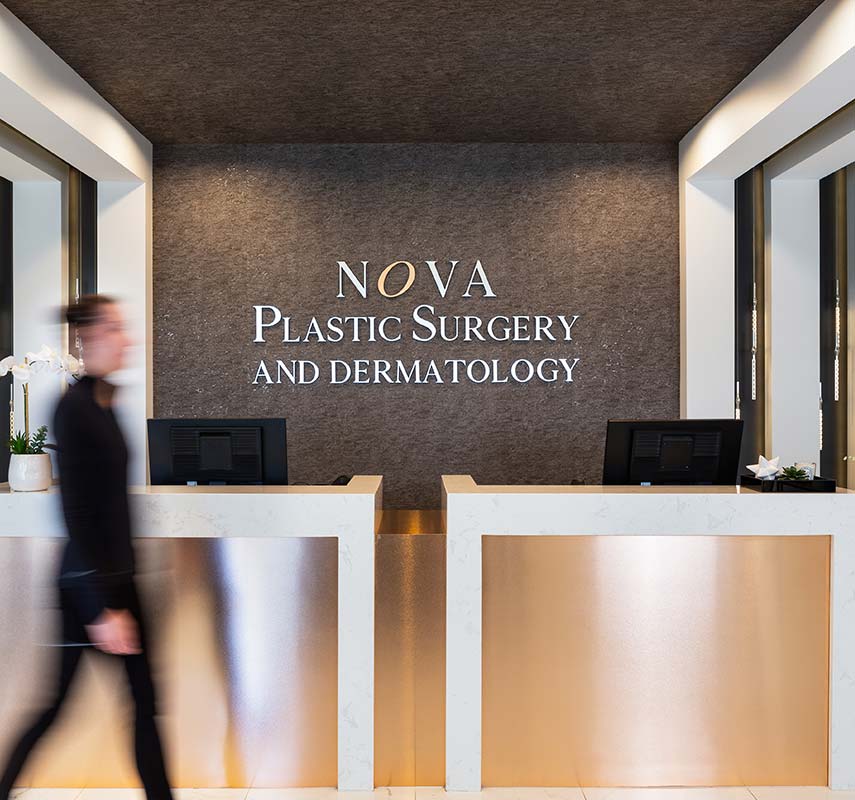

Breast Augmentation with Fat Grafting
What is Breast Augmentation With Fat Grafting?
It is a cosmetic procedure that involves taking fat from a donor site such as your abdomen or buttocks, and transferring it to the breasts to increase breast volume and cup size. It is one of the less invasive methods of enhancing your confidence through breast augmentation.


Why Get a Breast Augmentation Using Fat Grafting?
There is no negative immunological response to your own fat because it comes from your body (this is unlike when using traditional implants, which can cause capsular contracture or hardening of the breasts).
This procedure involves injecting the fat into the breasts, so there are no large incisions or scars to hide. There is little to no risk of losing sensation in the breasts, and since the procedure is generally performed on an outpatient basis under localized anesthesia, your recovery is shorter and easier than it would be with traditional implant surgery. It is an excellent option for women who want to restore breast volume that they lost due to pregnancy.
Though there is some reabsorption of the fat by the body once it is in place, the fat that does remain should last a lifetime. This is unlike implants, which are not lifetime medical devices and need to be replaced periodically.
Along with being used to augment breasts naturally, patients who already have implants can use natural breast enhancement to blur the visible lines around their implants for a more natural look. Fat transfer can also be used to fill in any rippling that is occurring with your existing implants, to replace implants after their removal, and to correct size differences between the breasts.
Who is A Good Candidate?
A good candidate for fat grafting for the breasts will be in good physical and mental health. The candidate should have a positive outlook and realistic expectations of the outcome of the surgery (it will enhance the size and volume of your breasts, but won’t change anything else about you). She should be getting the procedure for her own personal reasons, and not to satisfy anyone else.
Natural breast enhancement with fat is an excellent option for patients who want a mild to moderate increase in their cup size (one or two cup sizes), without the use of implants. It is also appropriate for patients who want to make corrections to the appearance of their existing implants, and for patients seeking to improve breast smoothness after a lumpectomy or other procedure that has altered the breast.
Contact Us
What Happens During My Consultation for Natural Breast Augmentation?
He will go over your medical history and any medication allergies you might have. The surgeon will select an appropriate donor site, and will discuss any complementary procedures you might want to have (such as liposuction).
How Do I Prepare for this Procedure?
You will need to stop smoking at least six weeks beforehand, and will stop eating and drinking at an instructed time the night before the surgery. The surgeon might have you stop taking any blood-thinning medications or herbal supplements about two weeks before your scheduled breast augmentation with fat grafting. Review any paperwork and post-operative instructions beforehand, and make sure you have cold compresses, your pain medication, and button-down shirts on hand at home.
Some patients may be asked to use tissue expanders for a period of time before surgery. These expanders act in a fashion similar to a breast pump. It applies suction to the breast to create more space in the tissues for the fat to be injected.
How is a Breast Augmentation With Fat Grafting Done?
The fat cells are removed from the donor site using one of many liposuction techniques. While some methods of liposuction can damage fat cells so they won’t grow when placed in the breast, the ones used for these procedures will leave the fat cells intact.
Once harvested, the fat cells are purified to remove blood, anesthesia, excess fluid, and damaged fat cells. The purification process concentrates the viable fat cells, so what is injected into the breasts has a greater likelihood of “sticking.”
The processed fat is transferred into several small hypodermic needles. The surgeon carefully injects the fat into the breast in pre-selected spots, usually between the skin and the breast tissues and possibly behind the breast between it and the chest. You might get some “over-filling,” where the surgeon injects more fat than is necessary, to account for reabsorption.
Once the fat is in place, your body will produce new blood vessels around the cells to provide nourishment and prevent cell death. The procedure usually takes between four and five hours.
What is Recovery Like?
The pain can be managed by medication recommended by your doctor. The swelling and bruising will begin to resolve after about 48 hours. Some patients may be asked to wear support garments for a few days.
Most patients can go back to work within four to seven days (this will vary if you had other procedures done at the same time). You will want to avoid strenuous physical activity until you are cleared by your surgeon.
When Can I See My Final Results?
Your breasts will immediately look different after your surgery, but swelling and fat reabsorption by the body will alter their appearance. The swelling will resolve in a few days, and any fat reabsorption will generally be completed in about six months. At that time, the results that you see should be your final results.
What Are the Risks of Breast Augmentation with Fat Grafting?
Other risks include fat migration, fat embolism (when the fat enters the bloodstream and can cause stroke or heart attack), infection, bleeding, and reaction to the anesthesia.
Select a Board Certified Plastic Surgeon for your breast augmentation with fat grafting– it’s one of the best ways to reduce the risk of complications. Board Certified surgeons have the training and expertise necessary to perform the procedure with meticulous attention to every detail. They use highly trained staff and the best medical facilities to help prevent complications from arising.
Following all your pre- and post-operative instructions will also help prevent complications. Your surgeon will discuss the risks with you in more detail at your consultation appointment.
